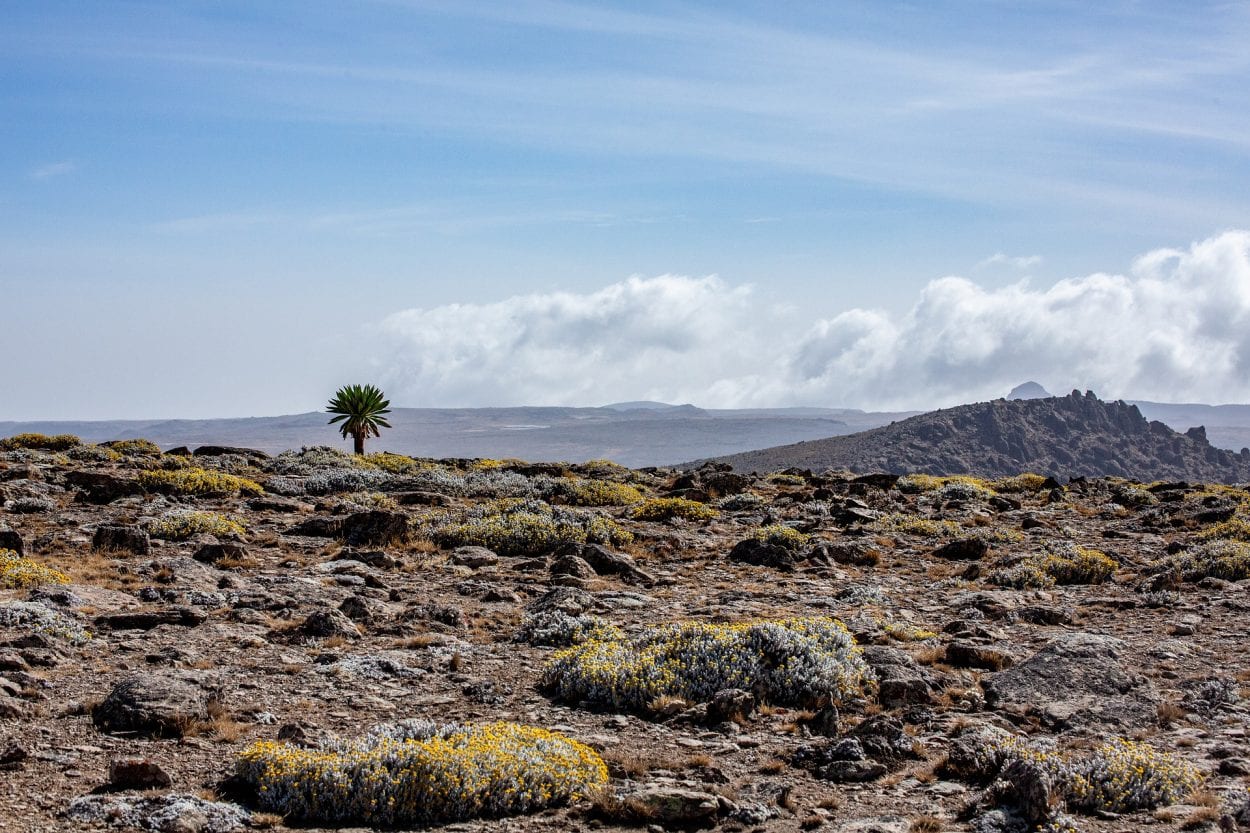An international research team led by Professor Dr Frank Schäbitz has published a climate reconstruction of the last 200,000 years for Ethiopia.
This means that high-resolution data are now available for the period when early Homo sapiens, our ancestors, made their way from Africa to Europe and Asia. Schäbitz and his colleagues determined the dates using a drill core of lake sediments deposited in southern Ethiopia’s Chew Bahir Basin, which lies near human fossil sites.
Temporal resolution of the samples, reaching nearly 10 years, revealed that from 200,000 to 125,000 years before our time, the climate there was relatively wet, providing enough water and thus abundant plant and animal food resources in the lowlands of East Africa. From 125,000 to 60,000 years ago, it gradually became drier, and particularly dry between 60,000 to 14,000 years ago. The data now obtained fit well with genetic findings, according to which our direct genetic ancestors (‘African Eve’) left Africa ‘successfully’ during a wet phase about 70,000 to 50,000 years ago.
The article ‘Hydroclimate changes in eastern Africa over the past 200,000 years may have influenced early human dispersal’ has appeared in Nature Communications.
Scientists collect information about the environment from lake sediments because, in the best case, sediments are flushed into lakes relatively continuously from the catchment through erosion. In addition to mineral components, sediments include organic material and remains of organisms living in the lake. If lake sediments from suitable lakes can be drilled, these ‘proxy data’ can be used to draw conclusions about environmental conditions at the time, and thus help to reconstruct the climate.
From November to December 2014, the researchers recovered an approximately 300 metre long drill core from the Chew Bahir Basin in southern Ethiopia, which dries out during the dry season. In its entirety, the drill core dates back to about 620,000 years. ‘This enables us to chronologically cover the entire evolutionary history of Homo sapiens in Africa. The work now published on the last 200,000 years of this drill core thus provides very good evidence of the environmental and climate history during the migration of our ancestors,’ Schäbitz explained.
‘Some of our proxies allow time resolution for specific decades in large sections of the core, which has not been done before for this part of Africa. That way we can capture very short-term climate changes representing less than a human lifetime,’ he said. The drill core reveals that the climate of East Africa was largely influenced by changes in solar insolation, which led to either wet or dry climate conditions.
From 200,000 to 125,000 years ago, the climate was generally relatively favourable, i.e., the lowlands provided enough water and thus abundant plant and animal food resources for our ancestors. Under such conditions, people could move relatively easily over long distances and even reach the Arabian Peninsula, as evidenced by the oldest fossil finds there (about 175,000 years ago). From 125,000 to 60,000 years ago, however, it gradually became drier, and then particularly dry between 60,000 to 14,000 years ago, with the lake drying up completely several times.
‘However, during this period in particular, quite striking, short-term moisture fluctuations can also be observed, the temporal patterns of which are reminiscent of cold-warm climate fluctuations known from Greenland ice cores. So the people who lived in East Africa at that time were exposed to extreme changes in their environments,’ Schäbitz said. ‘It is interesting that just in the period from 60,000 to 14,000 years ago, when the lowlands of East Africa were repeatedly particularly dry, numerous archaeological findings in the high altitudes of the Ethiopian mountains bear witness to the presence of our ancestors there.’ In addition, the weapons and tools of these people also evolved during this time period (transition from Middle to Late Paleolithic in Africa). ‘We suspect that the greater “environmental stress” at lower elevations forced this development,’ the scientist noted.
Furthermore, the scientists noted that the last major wet phase which we can see in the core fits well in time with the genetic findings: It shows that our direct genetic ancestors ‘successfully’ left Africa about 70,000 to 50,000 years ago. Their descendants probably reached southeastern Europe 50,000 to 40,000 years ago, where they encountered Neanderthals.
‘We hypothesize that the evidence of dry-humid climate fluctuations in East Africa found in our drill core had a significant impact on the evolution and mobility of our ancestors,’ said Schäbitz. ‘Migration out of Africa was possible several times during the last 200,000 years, during periods when the climate was wetter, and has led to the spread of our ancestors as far as Europe. During the particularly dry phases of the recent past, starting around 60,000 years ago, Homo sapiens groups repeatedly managed to survive in the high altitudes of mountainous Ethiopia.’
Header Image Credit : Public Domain





